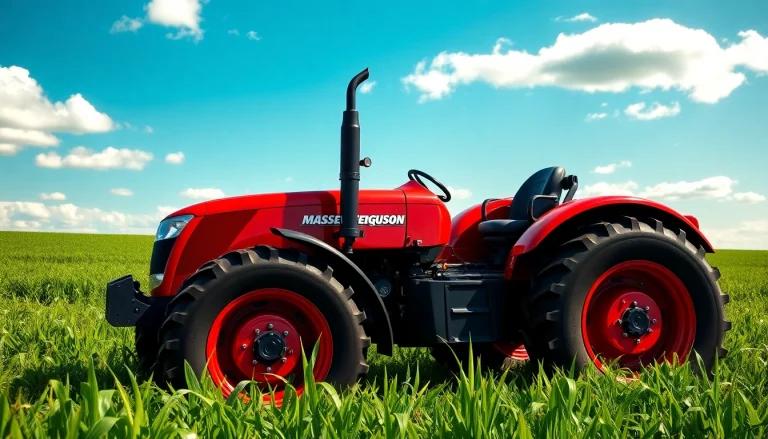Understanding Precision Die Cutting
What is Precision Die Cutting?
Precision die cutting is a manufacturing process that involves cutting materials into specified shapes and sizes using a die, a specialized tool designed for this purpose. This technique is commonly employed in various industries for producing components with intricate designs and precise dimensions. The process can involve various materials such as paper, plastic, rubber, metal, and textiles. As a vital part of modern manufacturing, precision die cutting enables the production of parts that are often required to fit together seamlessly within larger assemblies.
The Importance of Precision in Die Cutting
Precision in die cutting is crucial for several reasons. First, it directly affects the quality of the final product. Parts that are cut with high precision ensure better fit and functionality, which is essential in applications such as electronics, automotive, and medical devices. Second, precision die cutting can lead to cost-effectiveness; well-cut parts minimize waste material and reduce the need for extensive post-production adjustments.
Moreover, high precision can enhance operational efficiency. When components are cut accurately, the assembly processes that follow become faster and more reliable. In industries where tolerances are strict, like aerospace or medical fields, any deviation can result in functionality issues or safety hazards. Thus, achieving precision is not just a matter of quality; it’s often a matter of compliance with regulations and safety standards.
Applications of Precision Die Cutting in Various Industries
Precision die cutting is widely utilized in multiple sectors, including:
- Automotive Industry: Producing gaskets, seals, and insulation components that are crucial for vehicle assembly.
- Medical Devices: Creating precise parts for instruments, packaging materials, and implantable devices that require stringent safety standards.
- Consumer Electronics: Cutting components for devices such as smartphones and laptops, where space and fit are crucial for functionality.
- Packaging: Designing custom box shapes and labels that meet brand specifications while ensuring protection during transport.
- Textiles: Creating intricate patterns and shapes in fabrics for fashion or industrial applications.
Types of Die Cutting Techniques
Flatbed Die Cutting Explained
Flatbed die cutting utilizes a flat surface where the material is placed, and the die is pressed down onto it. This method is particularly advantageous for thicker materials and complex shapes. The tooling is generally more straightforward and less expensive, making flatbed die cutting a preferred choice for shorter production runs or prototyping. Common applications include packaging and labels, but it can also be used for textiles and automotive parts.
Exploring Rotary Die Cutting
Rotary die cutting utilizes a cylindrical die, allowing the material to be fed continuously through the cutting station. This method is efficient for high-volume production of parts and provides faster processing speeds compared to flatbed die cutting. Rotary die cutting is frequently employed for packaging, labels, and flexible materials, leveraging its efficiency and ability to create clean-cut shapes. The versatility and speed of this technique make it suitable for industries that require mass production without compromising quality.
Advantages of Laser Die Cutting
Laser die cutting has gained popularity due to its high precision and versatility. This method employs laser technology to cut through various materials, allowing for intricate designs that are often challenging to achieve with mechanical methods. Notably, laser die cutting eliminates the need for physical dies, reducing setup times and costs for small production runs.
This technique is ideal for industries requiring prototyping or low-volume runs, such as the art and craft sector, signage, and electronic components. Laser die cutting also allows for fine detailing, making it suitable for applications where aesthetic appeal is equally essential as functionality.
Choosing the Right Die Cutting Service
Evaluating Service Providers
Selecting the right die cutting service provider can be pivotal for the success of your project. Prospective clients should consider the provider’s expertise, equipment capabilities, and industry experience. Researching case studies and testimonials can offer insights into the quality of work and service consistency.
Additionally, visiting the provider’s facility, if possible, can provide a sense of their operational capabilities and adherence to quality standards. Choosing a company that understands your specific industry requirements will ensure that they can meet your needs efficiently.
Key Factors to Consider
When evaluating die cutting services, several key factors should be taken into account:
- Quality Assurance: Inquire about the quality control processes in place to ensure that parts meet the specified tolerances and requirements. Look for certifications that demonstrate adherence to industry standards.
- Turnaround Time: Understand the lead times associated with different production runs, as this will greatly impact your project timeline. Fast turnaround is essential for meeting market demands.
- Cost Structure: Request a detailed breakdown of costs to understand how pricing is determined. This will allow for better comparison across multiple providers.
- Material Compatibility: Ensure that the service provider is equipped to work with the materials you require for your projects.
Cost vs. Quality in Precision Die Cutting
While cost is a significant consideration in die cutting, it’s essential not to sacrifice quality for lower prices. Cheap services may cut corners in precision and material quality, leading to defects and increased waste. Instead, consider the long-term benefits of investing in a higher-quality service provider who can ensure consistency, reliability, and swifter production times, ultimately saving costs in rework or failed assemblies.
Best Practices for Precision Die Cutting Projects
Design Considerations for Optimal Outcomes
Successful die cutting begins with robust design consideration. Designers should take into account factors such as material thickness, grain direction, and the intended use of the parts.
Utilizing CAD software can aid in achieving precision in design layouts, and employing design rules—such as maintaining proper spacing between parts and including registration marks—will facilitate smoother production. Furthermore, collaborating with the die cutting provider during the design phase will help avoid issues that may arise later in manufacturing.
Material Selection for Precision Die Cutting
The choice of material plays a vital role in the precision die cutting process. Factors like density, elasticity, and thermal stability must be considered when selecting a suitable material. For instance, soft materials may require different cutting techniques than rigid materials.
Conducting tests on sample materials before full-scale production can also guide the final selection, ensuring they meet both design and functional requirements. Collaborate with your die cutting provider to gain insights into the best materials for your specific applications.
Common Challenges and How to Overcome Them
Precision die cutting can present several challenges, such as material wastage, tool wear, or vacuum hold issues. To mitigate waste, it’s essential to optimize layouts to reduce scrap material during the cutting process.
Regular maintenance of dies will prevent excessive wear, ensuring ongoing precision. Implementing a consistent review process for tool performance can also identify wear patterns that may need addressing during production runs. In cases where complex shapes are needed, conducting thorough testing will help perfect the techniques required for those designs.
Future Trends in Precision Die Cutting
Technological Advancements Impacting Die Cutting
The die cutting industry continues to experience rapid technological advancements. Automation and robotic integration into the die cutting process are some notable trends. These technologies enhance speed, efficiency, and accuracy, providing solutions for high-volume productions.
Furthermore, advancements in software, such as machine learning and predictive analytics, are transforming the way manufacturers approach die cutting operations, allowing for real-time monitoring and adjustments during production.
Sustainability in Precision Die Cutting
As industries increasingly focus on sustainability, the die cutting sector is not exempt. Many companies are exploring eco-friendly materials and methods that reduce waste and energy consumption. Innovations such as reusable dies and recyclable materials are gaining traction, reflecting an industry-wide shift towards greener operations.
Implementing sustainable practices can boost a company’s image and contribute to cost savings, particularly in waste management and raw material consumption. Companies looking to align with environmentally responsible practices may reduce waste during production, making eco-friendly die cutting an attractive option for modern businesses.
Market Direction and Emerging Opportunities
The future of precision die cutting shows promise as new applications emerge across sectors. The rising demand for tailored solutions provides opportunities for innovation and development of customized die cutting services. Networking with design engineers and exploring partnerships with tech companies can open doors to pioneering applications and enhance the competitive edge in the market.
In summary, the precision die cutting industry is evolving rapidly, with advancements in technology and an increased focus on quality and sustainability. Businesses can leverage these trends to improve their manufacturing processes, meet customer demands, and remain competitive in an ever-changing marketplace.




















+ There are no comments
Add yours